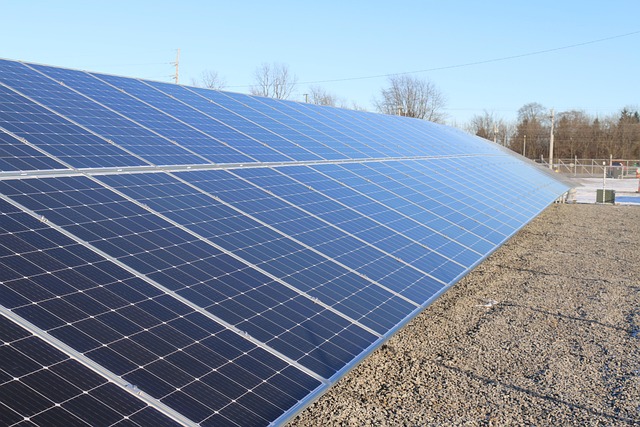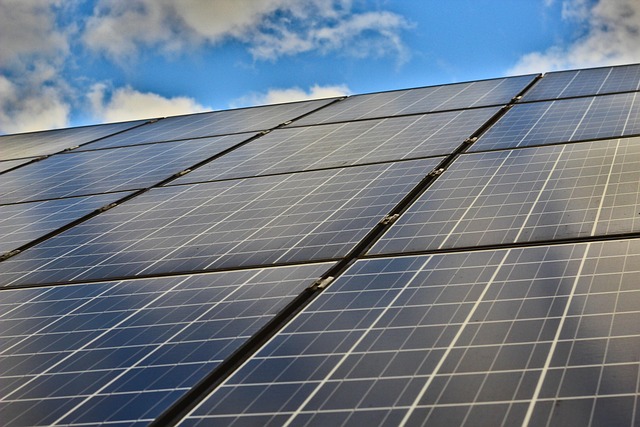Green Energy Myths Debunked: What You Need to Know
As society increasingly embraces the importance of sustainable living and environmental consciousness, the conversation around green energy continues to grow. Unfortunately, this conversation has also given rise to numerous myths that cloud public understanding and decision-making. In this article, we will debunk some of the most common misconceptions surrounding green energy, providing clarity on the benefits, viability, and future of renewable energy sources.
Myth 1: Green Energy is Not Reliable
A prevalent myth is that green energy sources, such as solar and wind, are unreliable and cannot provide a consistent power supply. Critics argue that renewable energy is subject to the whims of weather and time, leading to inevitable power shortages. However, this statement fails to consider advancements in technology and energy storage solutions that have transformed the renewable energy landscape.
Energy storage systems, such as batteries, allow excess power generated during sunny or windy days to be stored and used when conditions are less favorable. Moreover, diverse energy sources can be integrated into the grid. By utilizing a mix of solar, wind, hydro, and even geothermal energy, we can create a more resilient and reliable energy system. Countries like Denmark and Germany have demonstrated that it’s possible to achieve high reliability even with a significant percentage of renewables in their energy mix.
Myth 2: Transitioning to Green Energy is Too Expensive
Another common belief is that transitioning to green energy sources is prohibitively expensive. While it’s true that the initial investment can be high, the long-term savings often outweigh the costs. The price of solar panels, wind turbines, and other renewable technologies has dramatically decreased over the past decade, making them more accessible and financially viable for both individuals and organizations.
Additionally, the operational costs of renewable energy sources are typically lower than fossil fuels, as they do not require ongoing fuel purchases. Studies have shown that, over the lifespan of energy projects, renewables can prove to be less costly than continued reliance on fossil fuels. Furthermore, when considering the hidden costs associated with pollution and health impacts of fossil fuels, the financial argument for renewable energy becomes significantly stronger.
Myth 3: Renewable Energy Cannot Meet Global Energy Demands
Some skeptics assert that renewable energy is incapable of meeting global energy demands as population and consumption grow. They argue that, even with advancements, renewables cannot keep pace with the energy needs of the modern world. However, this argument overlooks the significant potential of renewable energy sources if they are harnessed effectively.
A comprehensive analysis by authoritative bodies such as the International Renewable Energy Agency (IRENA) has indicated that renewables could supply over 80% of the world’s energy needs by 2050 if investment and policies align with this goal. Innovations in energy infrastructure, energy efficiency, and demand-response programs can further assist in meeting rising energy demands sustainably.
Myth 4: Green Energy is Not Environmentally Friendly
Interestingly, some assert that renewable energy cannot be truly “green” due to the impacts of manufacturing and land use. While it is important to recognize that no energy source is entirely without environmental impact, this perspective does not account for the substantial benefits of renewables compared to fossil fuels.
For instance, solar and wind installations do require land and resources, but the energy they produce generates significantly lower carbon emissions over their lifespan compared to coal or natural gas facilities. Additionally, the rise of sustainable practices in manufacturing and the recycling of materials can mitigate many of the negative environmental aspects associated with green energy technologies.
Myth 5: Renewable Energy Jobs are Low-Paying
Another misconception is that jobs in the renewable energy sector are low-paying and less skilled compared to those in traditional fossil fuel industries. In reality, the renewable energy sector offers a broad range of job opportunities, many of which are high-skilled and well-compensated.
The renewable energy industry includes roles in engineering, manufacturing, project management, installation, and maintenance—often paying rates that can exceed those in fossil fuel industries. Reports indicate that jobs in solar and wind energy are among the fastest-growing sectors, providing not only competitive wages but also opportunities for advancement and career growth as the industry evolves.
Myth 6: The Technology is Not Ready for Widespread Adoption
Some claim that renewable energy technologies are too nascent to be relied upon for widespread adoption. This misconception is becoming increasingly outdated as renewable technologies have proven their effectiveness through widespread deployment in numerous countries. Available technologies such as solar photovoltaics, wind turbines, and hydropower are well-established and extensively researched.
Research has shown that the efficiency of solar panels, for example, has increased with advancements in technology, allowing for more power generation without requiring additional space. Governments and private sectors are investing significantly in research and development to improve existing technologies and discover new ones. As innovation continues, the viability and capacity of renewable energy sources will only improve.
Myth 7: Fossil Fuels are Always Cheaper
Many believe that fossil fuels remain the most affordable choice for energy, overlooking the fluctuating prices of oil and gas markets, which can lead to significant economic instability. These fluctuations often affect consumers and can make energy budgeting unpredictable.
Furthermore, hidden costs associated with fossil fuel extraction, pollution, and health repercussions exacerbate the idea that they are inexpensive options in the long term. The renewable energy sector, while initially intimidating due to upfront costs, can lead to substantial savings over time through stable energy prices and reduced health costs from pollution-related issues.
Myth 8: Renewable Energy is Only for the Wealthy
A common myth persists that renewable energy options, such as solar panels, are only accessible to affluent individuals or businesses. However, this view does not apply in an era where technological advancements are leading to diverse financing options, community solar projects, and government incentives aimed at fostering inclusivity.
Many low-income households can benefit from shared solar programs or community solar gardens, which allow individuals to partake in renewable energy without needing to install technology on their own property. Governments and nonprofit organizations are also working to make specific programs available to help subsidize solar installations for low-income families, ensuring equitable access to clean energy.
Myth 9: Electric Vehicles Eliminate All Emissions
Some people believe that switching to electric vehicles (EVs) completely erases emissions. While EVs do produce zero tailpipe emissions, it’s essential to consider the electricity sources used to charge them. If EVs are charged from renewable sources, they represent a significant reduction in overall emissions compared to traditional gasoline vehicles.
However, if the electricity comes from fossil fuels, there are still emissions associated with charging. Understanding the carbon intensity of grid energy is crucial for assessing the overall environmental impact of electric vehicles. In many regions, as electricity grids become greener, the benefits of EVs will increase over time.
Myth 10: Governments Should Not Support Green Energy
Finally, there’s the belief that government support for green energy is unnecessary and should not exist. This myth misses the importance of government influence in establishing renewable energy markets. Support through subsidies, tax incentives, and research funding can accelerate the transition to a cleaner energy future.
Many industries, including fossil fuels, have historically benefited from government support. As the climate crisis requires rapid action to mitigate its impacts, the role of government in supporting green energy becomes increasingly critical to combat climate change effectively and ensure energy security.
Conclusion
Green energy is a vital part of our future, and overcoming the myths surrounding it is essential to fostering a sustainable world. By debunking these misconceptions, we can encourage a better understanding of the benefits and truths of renewable energy sources. The transition to green energy not only makes environmental sense but also holds significant economic potential. As consumers, businesses, and governments harness this truth, a cleaner and more sustainable future is within reach.



